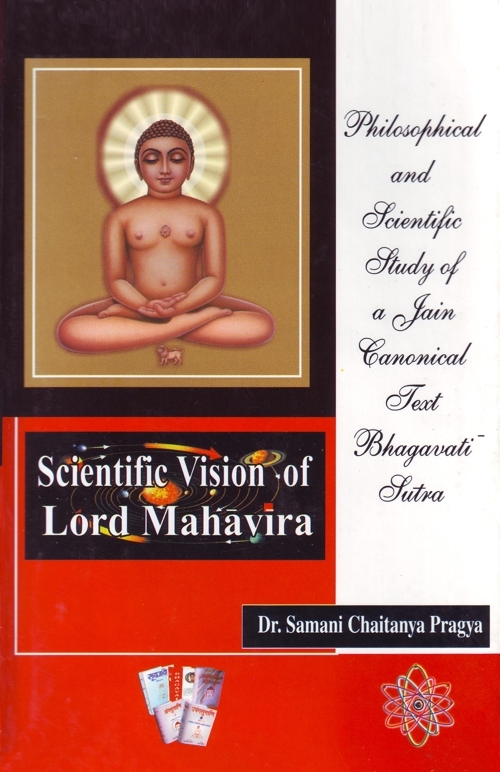According to the Jain Metaphysics matter exists in two forms—atom (paramāṇu) and clusters (skandha). So far as my knowledge goes and evidences are found the discussion on paramāṇu is seen firstly in the Jain canonical literature. In the literature, an elaborate treatment about nature and the properties of Paramāṇu is given. According to Jain philosophers, whatever differentiation and non-differentiation, integration and disintegration take place in the world, all of them are possible due to the different combinations of atoms and that of the physical substance with the conscious one.
Some of the Western philosophers are of the opinion that the atomic theory mentioned in the context of Indian thought has been borrowed from the ancient Greek philosophy. In the Greek thought Democritus was the first founder of the atomic theory.[1] He appears to have lived in the 5th century B.C. The idea of the smallest, indivisible, ultimate building blocks of matter came in connection with the elaboration of the concepts of being and becoming, which characterized the first epoch of Greek philosophy. But these explanations are not satisfactory, as there is no evidence for this. In fact, Democritus propounded the atomic theory much later. The Jain doctrine of paramāṇu is undoubtedly much more ancient than the Greek atomists. Bhagavān Parśvanātha (B.C. 877-777) and Lord Mahāvīra (B.C. 599-527) propounded paramāṇu as the ultimate indivisible unit. Secondly the Jain canons elaborate and present detailed discussions on nature, structure and behavior etc. of matter in general and paramāṇu in particular[2].
Although the Greek atomism has certain similarities with the Jain atomism, yet, there are certain fundamental differences between the two. Whereas Westen philosophers are of the view that atoms are conscious and unconscious both. According to the Jains, atoms are devoid of consciousness. Moreover, all the atoms of Democritus are of the same substance, but have different sizes and shapes. They are eternally unchanging, impenetrable and indivisible.[3] Atoms themselves have neither color nor smell nor taste. The sensibility of the material objects is produced by the motion and arrangement of atoms in space. "Sweet and bitter, cold and warm as well as the colours; all these things exist in thought but not in reality, what really exist are unchangeable particles, atoms and their motions in empty space" wrote Democritus.[4] So far as the Jain concept is concerned it is quite different which shall be discussed later on in this chapter.
Sivadatta Jnani regards that atomism is especially propounded by the Vaishesika.[5] It is also not true. Atomic concept of Vaishesika was not before the Jain concept of atom and unlike the Jain theory, Vaisesika has not given any specific details of its nature and motion etc. The term aṇu is used in Upaniṣadas. There it is stated—"aṇoraṇiyān, mahato mahīyān," but there is also no mention of paramāṇu as such, nor aṇu has there been discussed in detail.
Dr. Jacobi is of the opinion that the mention of the atomic theory in the Upaniṣadas and in its philosophical literature is very little. In Vedant philosophy, there is seen a total refutation of the atomic concept as it was supposed in the Upaniṣadic time.[6] Sankhya and Yoga philosophy also do not accept the atomic theory and they claim to be as old as the Vedas. Thus, in the view of Jacobi the Jain theory of atom is very ancient because Jainism has based its theory of atom on the theory of matter.[7]
Modern philosophers also have the same view that the atomic theory was first presented in a systematic form by the Jains.[8]
 Dr. Samani Chaitanya Pragya
Dr. Samani Chaitanya Pragya

